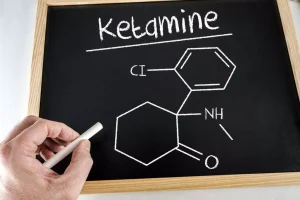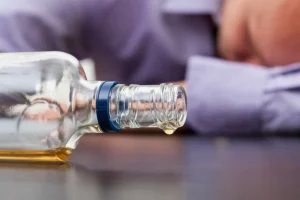Tips for Dealing with Triggers in Recovery

Resisting, ruminating, and finally giving in to the desire perpetuates the cycle of distraction and quite possibly drives many unwanted behaviors. Support the creation https://ecosoberhouse.com/ of new tools for the entire mental health community. Memories can also give rise to intrusive thoughts and emotions, which can be triggers themselves.

A Multifaceted Approach: Addressing Internal and External Triggers in Addiction Recovery
The first step to managing distraction is to recognize that it starts from within. Unless we deal with the root causes of distraction, we will continue to find ways to distract ourselves. External triggers, on the other hand, are cues in our environment such as the pings, dings, and rings that prompt us to check our email, answer a phone call, or open a news alert. External triggers can also take the form of other people, such as a co-worker who stops by our desk to chat. They can also be objects, like a television set whose mere presence urges us to turn it on. Not all memories are painful — memories of using a substance and the resulting feelings can be quite pleasant.
Keep an open mind
We can establish a more tranquil baseline for ourselves and limit the potential for emotional reactivity by changing up our personal surroundings. Pictures of friends and loved ones on your desk, wall, or phone screen can remind you of what is truly important when your cubicle mate yet again puts his feet up on his desk. Dr. Bricker advises writing down the trigger, whether or not you subsequently give in to the distraction. As a result of this increased awareness, your emotional reactions may feel more understandable, valid, predictable, and less out of control. External triggers are situations or objects in your environment, while internal triggers emerge from inside of your own body.

Why It’s Important to Know How Much a Partner Can Annoy You
Learn to recognize physical signs of reacting to a trigger, such as changes in your breathing, so that you can employ strategies to calm yourself and shift your emotional state. Your goal should be to detach yourself from the trigger, recenter, and focus on your coping strategy. Whether trigger warnings are helpful or harmful is a subject of debate. Some use trigger warnings to give students time to physically or mentally prepare for potentially distressing subject matter, such as physical or sexual violence. Trigger warnings are used in other settings, too, such as in the media.
- Learning tools to manage triggers can make a big difference in how you respond to — and ultimately cope with — them.
- Keeping track of your experiences and what was happening before you began to experience symptoms can help you better understand your triggers.
- Avoiding your triggers is the most effective way to avoid having PTSD symptoms.
- Treatments supported by frontline research can drastically decrease the frequency of the effects of triggers — for example, decreasing intrusive memories.
We can cope with uncomfortable internal triggers by reflecting on, rather than reacting to, our discomfort. We can reimagine the task we are trying to accomplish by looking for the fun in it and focusing on it more intensely. In some cases, triggers are signs of danger that preceded an earlier wound. Sometimes these warnings are helpful, but when applied automatically to a different situation, our reactions can be dysfunctional.
Negative Emotions

Two strategies can help make life with another person a little bit smoother. First, you can channel your energy toward addressing your “solvable” problems. These arise in the moment because of a specific situation and do not represent deeper personality or lifestyle differences between the two of you. With positive dialogue, you can collect some wins by solving some of internal vs external triggers the things that bother you when they pop up in the moment, leaving more energy in reserve for taking a deep breath and letting the rest go. When triggered, negative thoughts and emotions can hijack the brain’s decision-making systems, making it hard to think clearly. Mindfulness practices combat this dynamic by helping you focus on the present moment without judgment.
Emotional Regulation and Coping Strategies
- These triggers can be diverse and vary greatly from person to person.
- But recovery is a journey, and there are many other tools in treatment that can support your sobriety.
- We can easily activate our inner critic to ruin our day or our life!
- However, learning the tools to cope with triggers is possible with the right support.
Once patients have learned to identify their triggers, a plan of action is necessary to help avoid and anticipate the effects. Specialists often recommend “thought stopping” strategies, the development of refusal skills, and the avoidance of high-risk situations. Addition treatment will help patients learn how best to utilize these strategies while forging their own recovery path.

